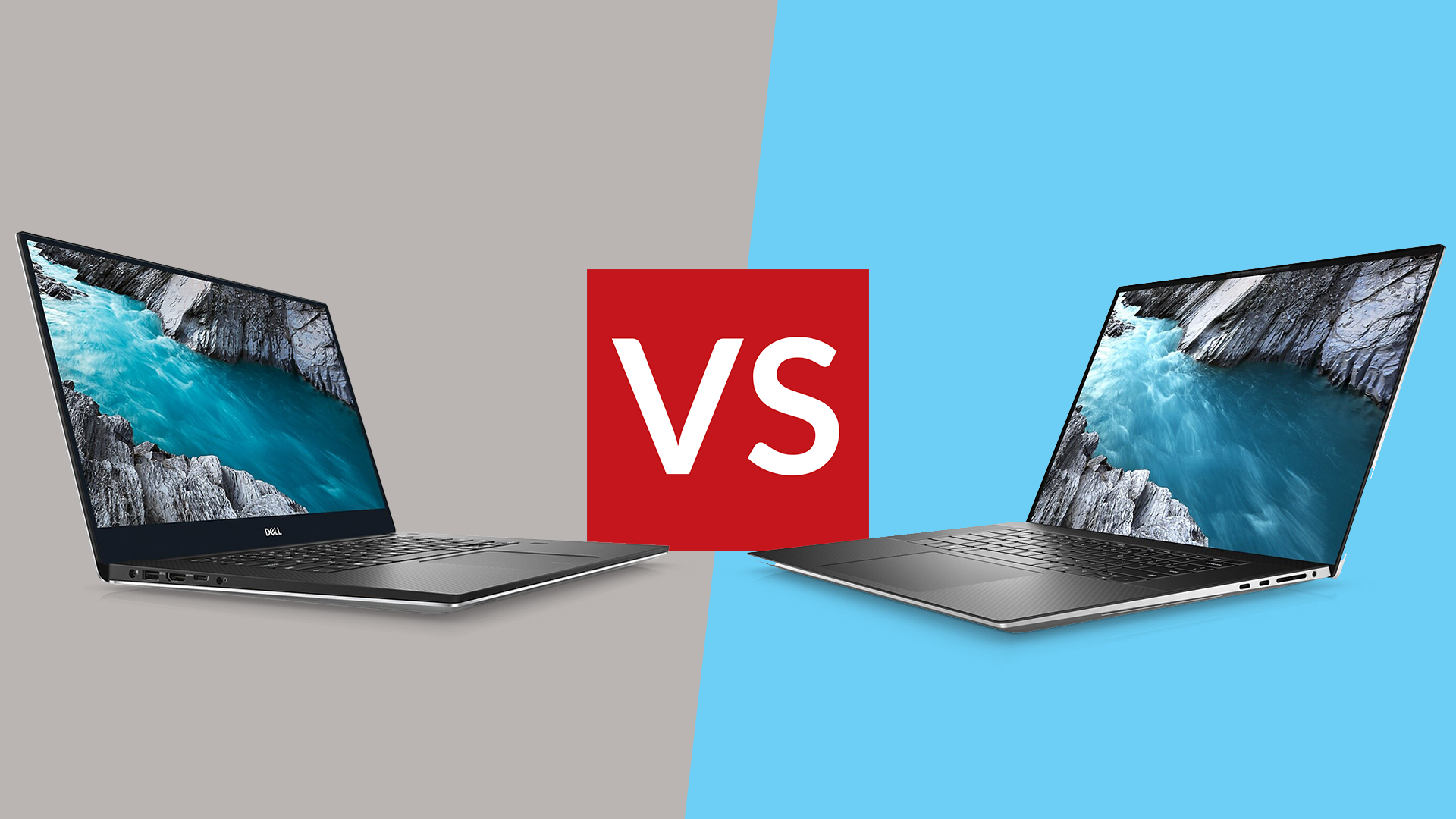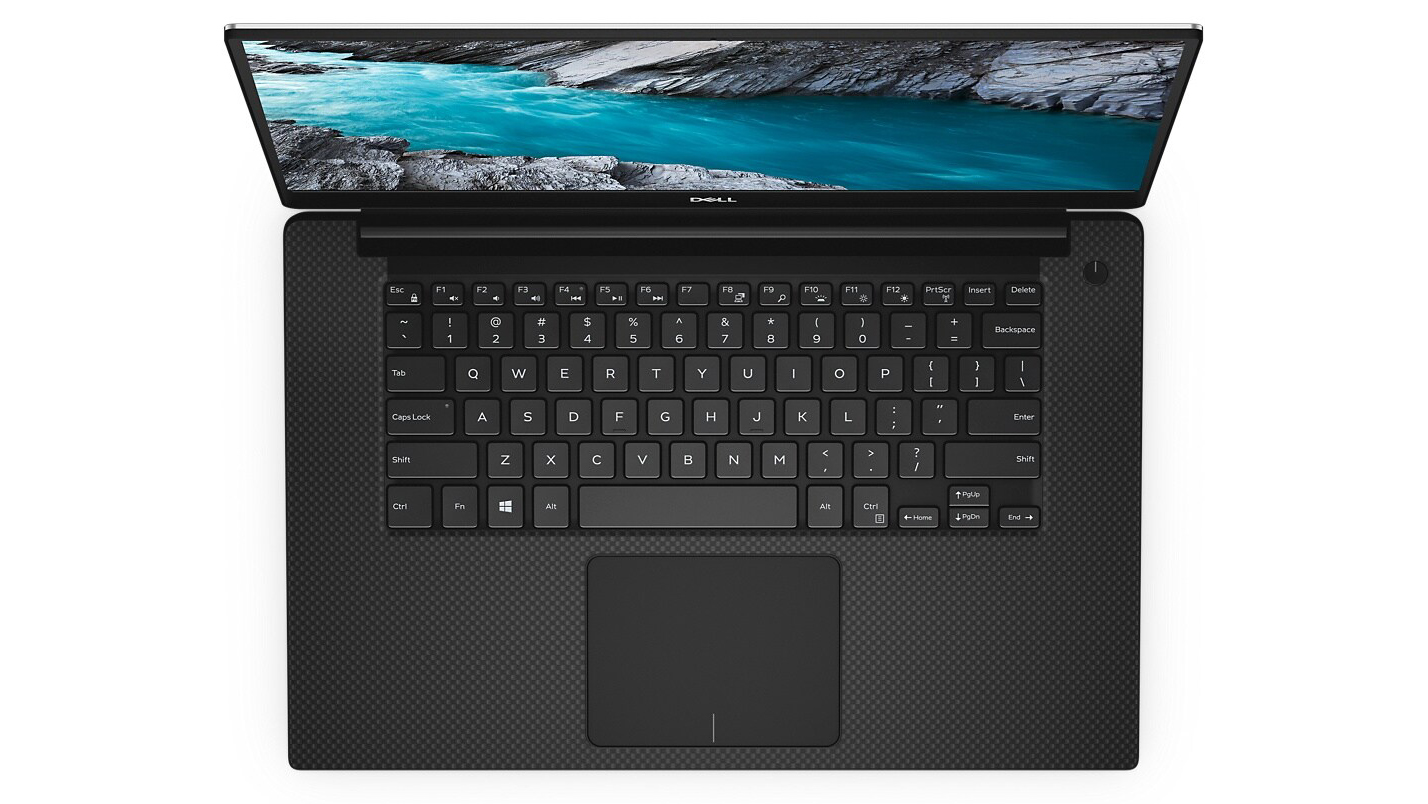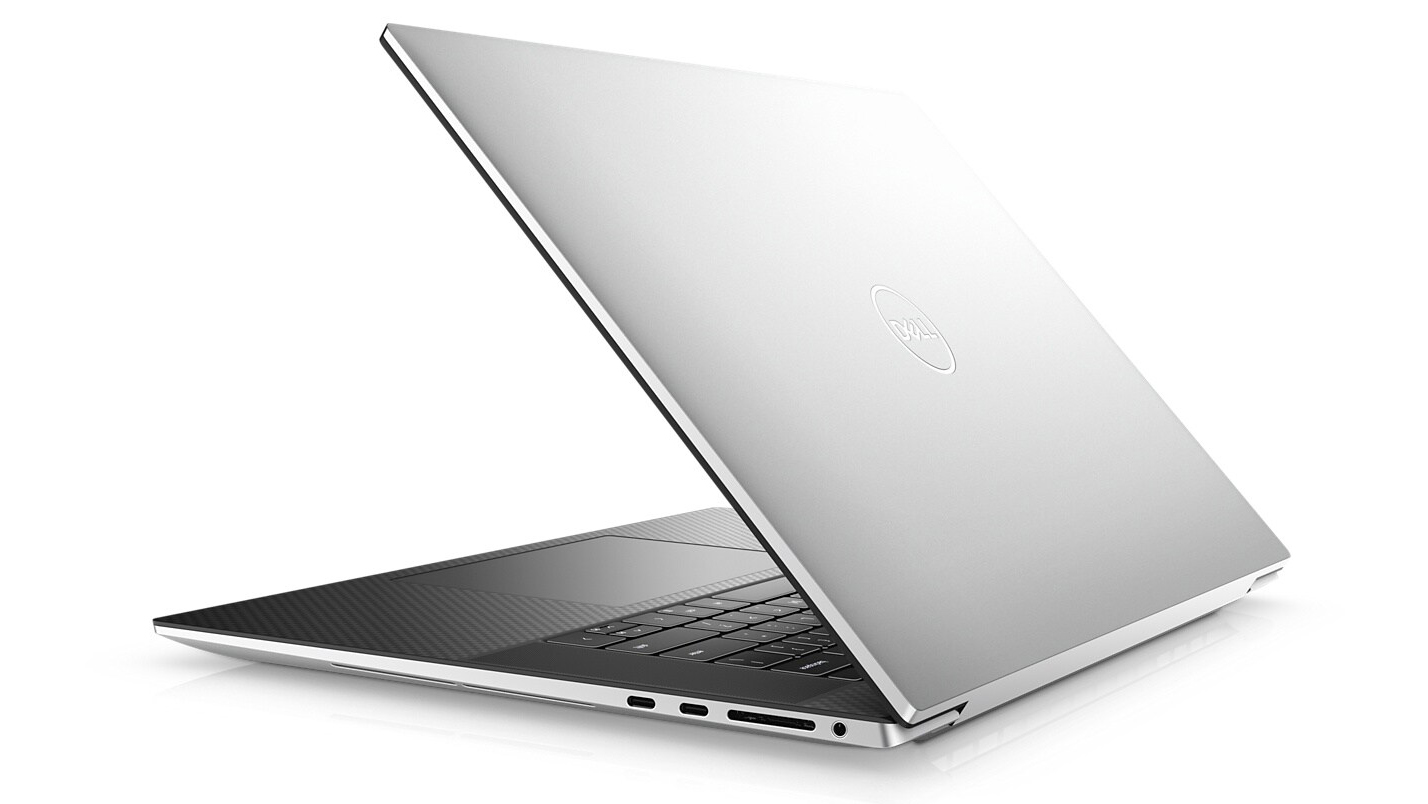
Dell’s XPS range of laptops has always been the place to go for premium ultraportables, and they’re some of the best Dell laptops you can get. But if you're looking at machine to get lots of work done in 2022 then you're probably considering the Dell XPS 15 vs XPS 17 – the bigger models give you more working space.
They’re both jacks of all trades and proud of it, the sort of thing you can happily whip out at the coffee shop before taking home for some snuggly streaming. The Dell XPS 13 might be the most slim and agile in the XPS range, but the 15-inch and 17-inch options cram more into their larger silver or black frames while retaining the portability that is the hallmark of the series.
We've got our full Dell XPS 15 review here, and both these machines are among the best laptops out there, but which is the best buy for you? Let's compare.
Dell XPS 15 vs XPS 17: Design and screen

The Dell XPS 15.
Following a 2020 redesign, the XPS 15 and XPS 17 look very similar to one another. The 17-inch model is naturally larger and a little heavier, but they have the same keyboard, and the materials and shape are the same.
Where the differences start to make themselves known is in the number of ports scattered around the edges of the frame: the 15-inch gets two Thunderbolt 3/USB-C ports, an extra USB 3.1 Type-C port, plus a full-size SD card reader and a headphone socket. The 17-inch, however, keeps the SD card and headphone slots, but switches to four Thunderbolt 3/USB-C ports. Any of them can be used to power the laptop – it's a lot like the 16-inch MacBook Pro's setup, except you also have an SD card ready. Oh, and you get a USB-C/Thunderbolt to HDMI and USB-A adapter in the box, which is thoughtful.
The laptops’ screens are all lovely anti-glare 500-nit ‘InfinityEdge’ (small bezel) displays. You get a choice of Full HD 1920x1200 non-touch display, or a 4K 2840x2400 touchscreen – both models offer the same two options.
Dell XPS 15 vs XPS 17: Design and screen

The Dell XPS 17.
You’ll find 10th generation Intel CPUs in both the 15in and 17in XPS models – the XPS 13 has been updated to the 11th-generation Intel chips, but they have yet to find their way to these larger models. Intel’s 10th-gen brought a lot to the party, notably the Thunderbolt 3 connections we mentioned above, and Wi-Fi 6 for stronger connections to the latest broadband routers plus the latest Bluetooth 5.
Sign up to the T3 newsletter for smarter living straight to your inbox
Get all the latest news, reviews, deals and buying guides on gorgeous tech, home and active products from the T3 experts
The graphics architecture was updated too, with the integrated GPUs strong enough to stream 4K HDR video and even a bit of light gaming. There’s a dedicated Quick Sync core in these chips that can encode and decode video quickly, taking the strain off the other CPU cores so you can continue surfing the web at the same time. If that’s not enough for you, then you can spec an XPS with a dedicated GPU – but more about that later.
CPU options for the XPS 15 and 17 are the same: the entry level is a Core i5 with four cores and HyperThreading that’s capable of boosting to 4.5GHz. If you need more power, there’s an i7 option with six cores (12 threads) that hits a top turbo speed of 5.0GHz.
The XPS 17 drops in a further i7 option with eight cores (16 threads) that hits 5.1GHz, but this isn’t available on the 15-inch model. Finally, if you want the best and can afford it, there’s an i9 processor available on both the XPS 15 and XPS 17 – it has eight cores and 16 threads, but boosts itself to a huge 5.3GHz and has a larger pool of cache memory available to it than the i7 chips, for snappier performance.
To make the most of these processors, you’ll need lots of RAM, and both the XPS 15 and XPS 17 models support up to 64GB of DDR4, clocked at 2933MHz. You can spec a laptop with either 8, 16 or 32GB of the stuff, or go all-in with 64GB.
Another difference between the two larger XPS models is found in the amount of storage you can pack inside. All the models use M.2 SSDs with the speedy NVMe technology that connects them directly to the CPU’s PCIE system, but if you want a 2TB drive you need to get the XPS 17. The same is true, oddly of the smallest 256GB drive option – the XPS 15 only offers 512GB or 1TB. While 256GB might be large enough, especially if your work is mostly basic documents or cloud-based, we think 512GB is what you should shoot for these days, and the XPS 15 agrees.
Then we come to graphics. While the Intel UHD GPU integrated into the 10th-gen Intel chips is pretty good for day-to-day use, if you're going to be doing any sort of gaming, or any sort of graphics-intensive tasks such as video editing or 3D rendering (even photo editing apps such as Photoshop can offload tasks to a GPU for increased speed), then you’ll want a laptop with some sort of discrete graphics processing capability. The XPS 15 and XPS 17 laptops come with the ability to add an Nvidia GPU, but the selection is better if you pick the 17-inch model.
The only option on the XPS 15 is the GeForce GTX 1650Ti. This was a very middle-of-the-road chip when it launched back in 2019, and Nvidia has released a whole new range of GPUs since its debut. That said, it’s still stronger than the integrated graphics chip. The XPS 17 offers an additional option: the RTX 2060 Max-Q. This is again not the latest chip, but offers Nvidia’s ray-tracing technology for improved lighting effects in games that support it.
These days, the 2060 is not a screamer of a card, but as long for playing games at 1080p resolution, it should work well. The XPS models are not really gaming laptops, so we don't expect them to keep up with the latest developments.
There’s a slightly disappointing 720p 30fps dual-mic webcam built into the bezel, and there’s a quad speaker system that totals 8W of output. All XPS laptops come with Windows 10 Home.
Dell XPS 15 vs XPS 17: Price and verdict
For its most basic version, the XPS 15 starts at around £1600/$1,600. Move up to a healthier 16GB of RAM, a 1TB SSD and the 1650Ti GPU, and you’re looking at £2,000/$2,000, although US specs are slightly different to UK ones.
The XPS 17 starts at £1,800/$1,400 and rising to £2,600/$2,850 with touchscreen. Drop down through Dell’s ranges and you’ll find much cheaper options, but the XPS earns its place on our best laptops list through its combination of sheer power and design excellence.
Your choice comes down to what size screen you want, and whether you need the biggest graphics power or 2TB of storage. Only the XPS 17 offers those last two, but the XPS 15 is perfectly well specced for the niche the XPS laptops occupy in the laptop hierarchy, and is smaller and lighter too, of course.
Whichever you end up choosing, make sure you check our Dell discount codes to save on your order.

